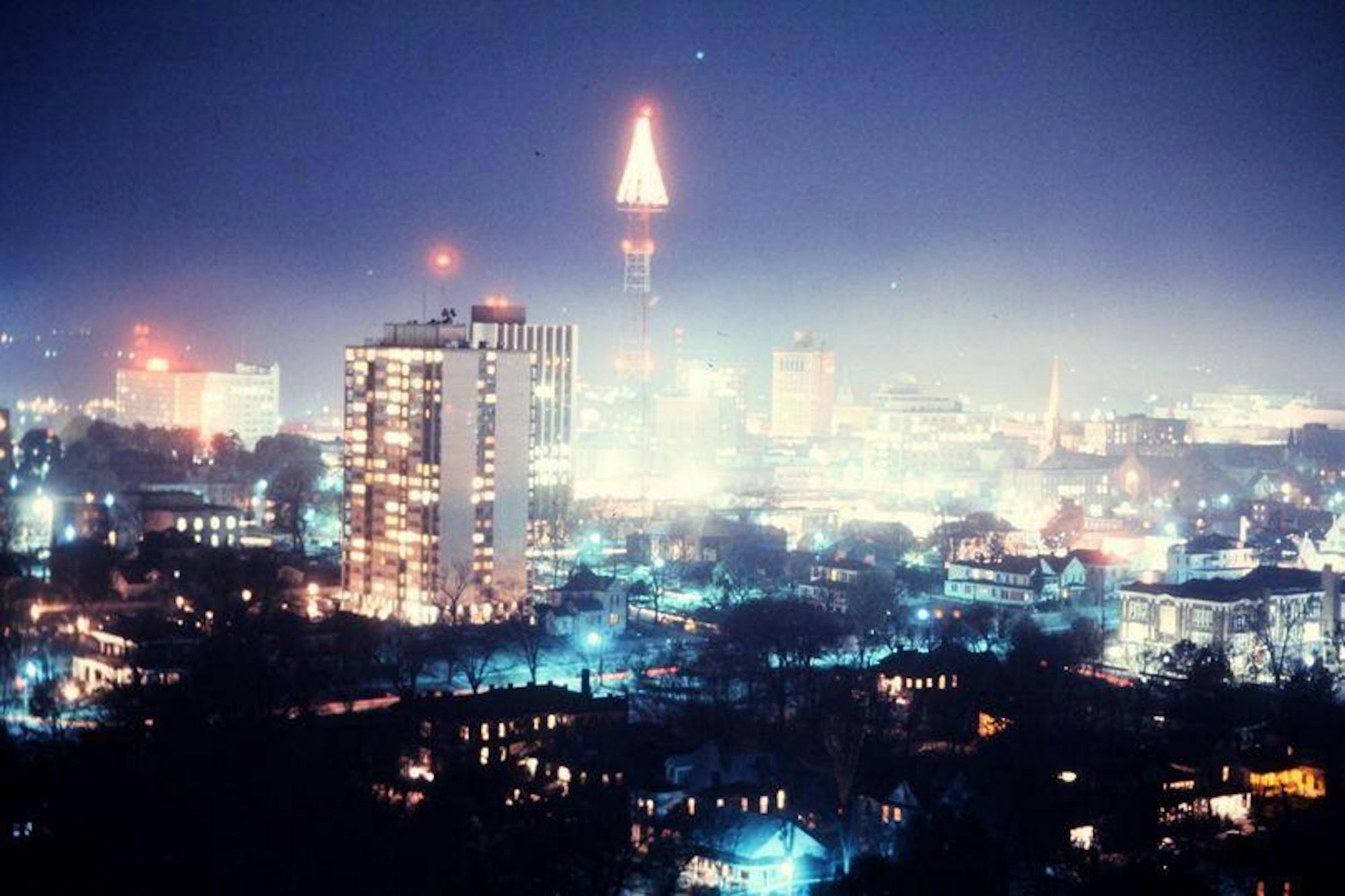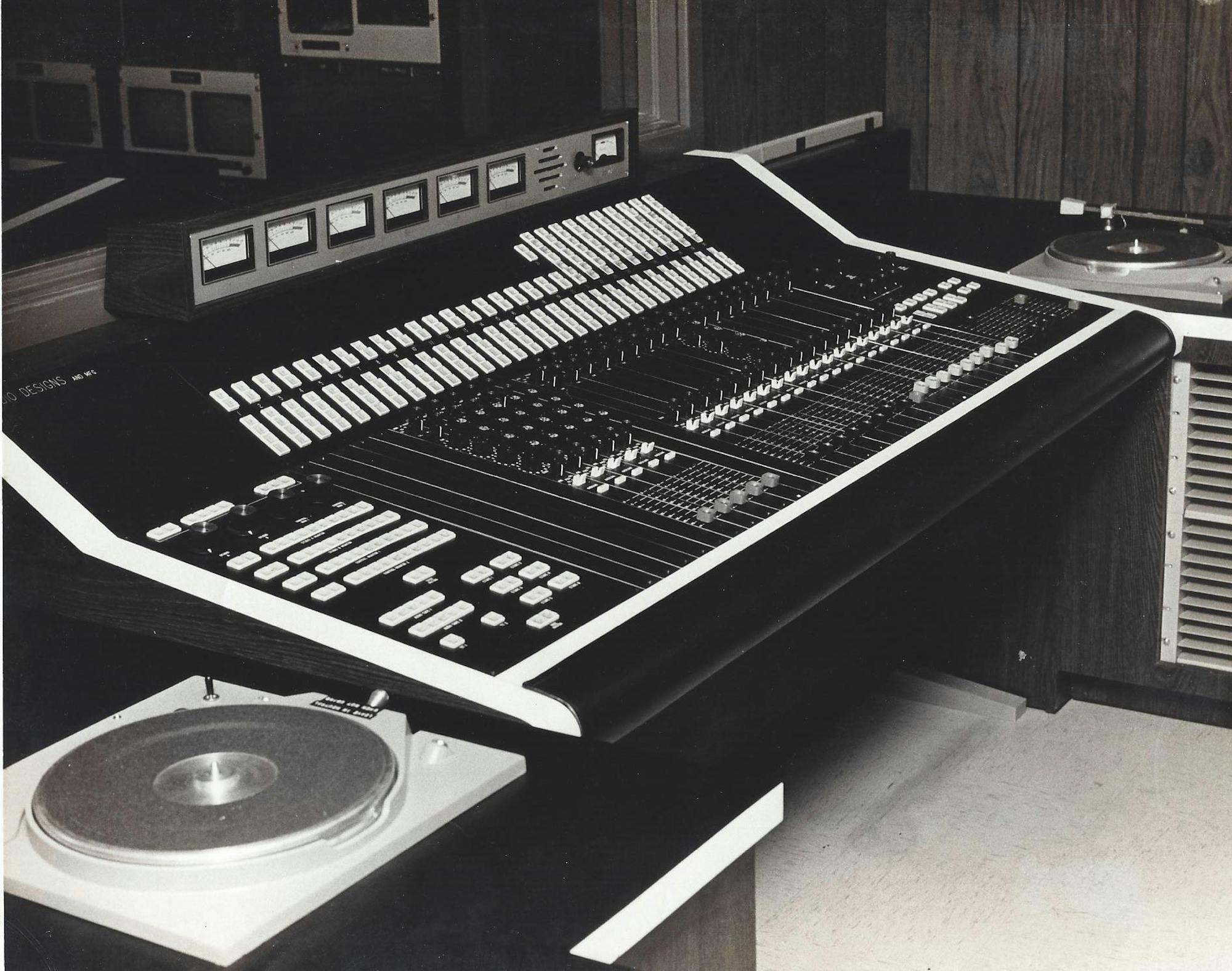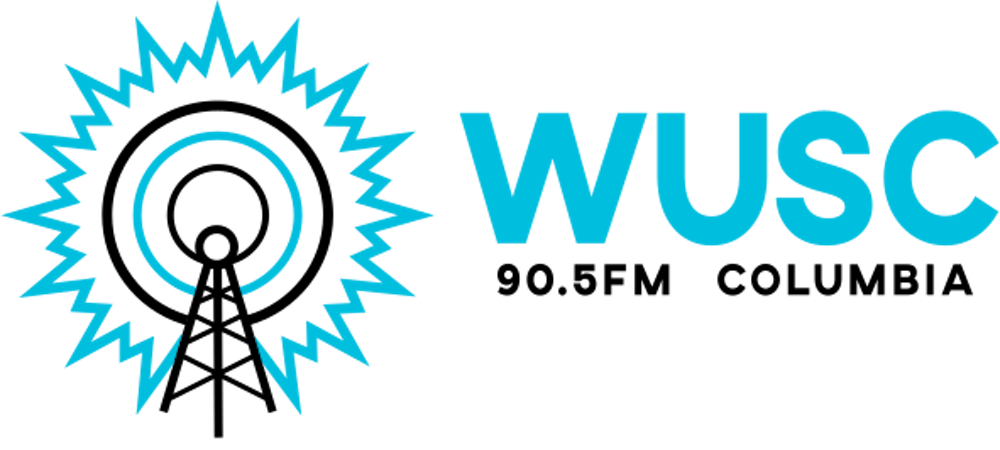One of the most notable things about the Columbia skyline in late November and December is the array of Christmas lights at the top of the 400’ tower downtown, in the shape of a Christmas Tree. Back in the 70s the tree would be lit as soon as possible after the State’s Christmas Tree was lit by the Governor or his designee during the Governor’s Carolighting Ceremony. The Carolighting Ceremony at that time always occurred the Sunday after Thanksgiving and was carried live by SCETV who sent it to WIS-TV and other stations around the state via telephone company video circuits.

In my early WIS-TV years, I was doing the evening prime time shift in Master Control and one of my duties then was to turn the WIS-TV tower tree on when the State Tree was lit. The tower tree was controlled by a photo-electric control that turned it on at dusk and off at dawn. This photo-electric circuit was controlled by a master switch mounted on the outside wall of Master Control on the second floor beside the small half-door that led to the roof of the first floor studio underneath the tower.
The State Tree was lit during the last five minutes of the hour long Carolighting Ceremony following the preachers, choirs and politicians. When the Governor began the last speech before the lighting, I would make my way out the door onto the roof and put my hand on the master switch while looking at the master control operator through the door. I could easily hear the countdown to the lighting of the State Tree from the broadcast. When it reached zero I would wait a beat for confirmation from master control that the state tree had been successfully lit and then pull the switch. So, boys and girls in KnowzitLand, it wasn’t magic after all.
Part of my responsibilities of managing the audio equipment at WIS-TV was maintaining the audio consoles, commonly called “boards” by those in the business. The audio production board was an old Altec knock off of the Western Electric 25B that was introduced in 1942. Our console was built in the mid 1950s and 20 years later it was nearing the end of its useful life. We were planning on replacing it with the construction of the new studio. We were also planning on replacing the old RCA video switcher with a new Grass Valley Switcher you know the one that blew up Alderaan in Star Wars.
In the Spring of 1974 WIS entered into a contract with Audio Designs and Manufacturing (ADM) for two audio boards, one for WIS Radio and the other for our new studios at WIS-TV. ADM was principally known for their broadcast consoles for television and radio. These consoles were of modular design and could be configured to the customer’s specifications. Joe Davenport, the chief engineer of WIS Radio at the time was given the responsibility for the configuration for the board at Radio and I was given the responsibility for the one at TV.
This really excited me because ADM used slide audio faders to control sound levels instead of the rotary potentiometers that were the norm at the time. I had seen my first “slide pot” board in 1968 at WAPE in Jacksonville. That gem was way ahead of the times and was built by Cyril Brennan and I was aching to have one of my own at my station despite the drawback of sliding faders; dirt and debris could get into the slots for the sliders and create noise when moved. ADM had an ingenious solution, the sliders on their pots, turned a twisted piece of metal as they slid from the bottom of the slide to the top. This twisted metal piece in turn rotates a standard rotary pot similar to the one that had been in use for decades. No debris, no noise!
The general plan I had for the layout was to have the 8 microphone inputs on the left side of the console, the line inputs for the other audio sources such as the video tape machines, film chains, cart machines, reel to reel audio tape machine and turntables next and finally in the last slot, the Network Channel for NBC. To the left of the console were the remote control devices for the equipment in the booth; Cart machines, reel to reel machine and turntables. My thinking was that the audio operator would often be using both hands when turning on and off microphones and would be using their left hand on the remote controls and the right hand turning up the other equipment in the booth.
On the left under the remote controls was a patch panel for the microphone inputs where any microphone jack in any studio could be connected to any of the 8 inputs that had microphone pre-amps. On the right side of the console was the line level patch panel which the operator could use to move any audio source to another input in case of a failure of a module. I presented my plans to the audio operators and was surprised and pleased that they had no changes to them.

The ADM console was installed flush to the wall with a 4’x8’ window looking into the side of the video production room. From that vantage point, the audio operator could still see the video monitors in front of the director from an angle and could easily make eye contact with the director without the director having to turn his head completely around. This was the only time I have seen this configuration between the audio and video control rooms in my career, but it worked for us.
In the Spring of 1976, Joe Davenport, the long time Chief Engineer for WIS Radio retired and I was picked to succeed him. One of the first things I noticed there was that Joe had come up with a similar configuration for his ADM board.

I was born in a great Radio Town; Jacksonville Florida. So it was only natural that I joined WUSC (AM at the time) in my first semester 1963. I went on to a career in commercial radio and television in Columbia, WCOS AM & FM, WIS-TV, WIS Radio, SCETV and PBS. I'm retired now, giving back since 2010 to the station that started my career, WUSC-FM. If you did the math you will know that I celebrated the 60th anniversary of my first radio show ever in November 2023.

